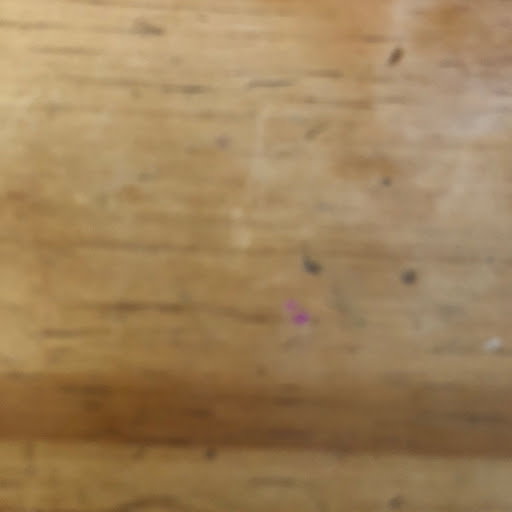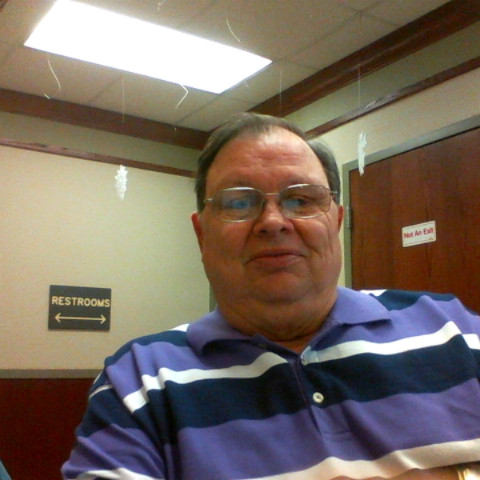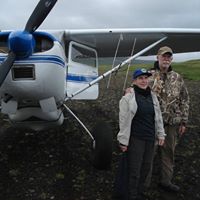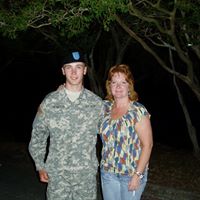Kenneth V Peterson
age ~86
from Gold Canyon, AZ
- Also known as:
-
- Kenneth Vernon Peterson
- Ken V Peterson
- Phone and address:
- 4982 S Nighthawk Dr #4, Apache Junction, AZ 85118
Kenneth Peterson Phones & Addresses
- 4982 S Nighthawk Dr #4, Gold Canyon, AZ 85118
- Apache Junction, AZ
- Omaha, NE
- Lompoc, CA
- Hazen, ND
Medicine Doctors

Dr. Kenneth B Peterson, Scottsdale AZ - MD (Doctor of Medicine)
view sourceSpecialties:
Internal Medicine
Address:
9501 E Shea Blvd, Scottsdale, AZ 85260
4806270965 (Phone)
8209 E Del Campo Dr, Scottsdale, AZ 85258
6023160251 (Phone)
4806270965 (Phone)
8209 E Del Campo Dr, Scottsdale, AZ 85258
6023160251 (Phone)
Certifications:
Internal Medicine, 1986
Awards:
Healthgrades Honor Roll
Languages:
English
Education:
Medical School
University Of Arizona
Medical School
Banner Good Samaritan Medical Center
University Of Arizona
Medical School
Banner Good Samaritan Medical Center

Kenneth B. Peterson
view sourceSpecialties:
Family Medicine, Sports Medicine
Work:
VA Black Hills Health Care System
113 Comanche Rd, Fort Meade, SD 57741
6053472511 (phone), 6057207171 (fax)
113 Comanche Rd, Fort Meade, SD 57741
6053472511 (phone), 6057207171 (fax)
Education:
Medical School
University of South Dakota Sanford School of Medicine
Graduated: 1980
University of South Dakota Sanford School of Medicine
Graduated: 1980
Procedures:
Cardiac Stress Test
Pulmonary Function Tests
Pulmonary Function Tests
Conditions:
Osteoarthritis
Peripheral Nerve Disorders
Anxiety Dissociative and Somatoform Disorders
Anxiety Phobic Disorders
Burns
Peripheral Nerve Disorders
Anxiety Dissociative and Somatoform Disorders
Anxiety Phobic Disorders
Burns
Languages:
English
Description:
Dr. Peterson graduated from the University of South Dakota Sanford School of Medicine in 1980. He works in Fort Meade, SD and specializes in Family Medicine and Sports Medicine. Dr. Peterson is affiliated with VA Black Hills Healthcare System.

Kenneth B. Peterson
view sourceSpecialties:
Internal Medicine
Work:
Kenneth B Peterson MD
8209 E Del Campo Dr, Scottsdale, AZ 85258
6023160251 (phone)
8209 E Del Campo Dr, Scottsdale, AZ 85258
6023160251 (phone)
Education:
Medical School
University of Arizona College of Medicine at Tucson
Graduated: 1982
University of Arizona College of Medicine at Tucson
Graduated: 1982
Languages:
English
Spanish
Spanish
Description:
Dr. Peterson graduated from the University of Arizona College of Medicine at Tucson in 1982. He works in Scottsdale, AZ and specializes in Internal Medicine.

Kenneth D. Peterson
view sourceSpecialties:
Chiropractor
Work:
Peterson Clinic
1002 W Elm Ave, Hermiston, OR 97838
5415676277 (phone), 5415679055 (fax)
1002 W Elm Ave, Hermiston, OR 97838
5415676277 (phone), 5415679055 (fax)
Languages:
English
Description:
Dr. Peterson works in Hermiston, OR and specializes in Chiropractor.

Kenneth S. Peterson
view sourceSpecialties:
Family Medicine
Work:
UMass Memorial Medical GroupPlumley Village Health Services
116 Belmont St RM 11, Worcester, MA 01605
5083341102 (phone), 5087951739 (fax)
116 Belmont St RM 11, Worcester, MA 01605
5083341102 (phone), 5087951739 (fax)
Languages:
English
Spanish
Spanish
Description:
Mr. Peterson works in Worcester, MA and specializes in Family Medicine. Mr. Peterson is affiliated with UMASS Memorial Medical Center.
Us Patents
-
Method For Error Correction In A Communication System
view source -
US Patent:6691274, Feb 10, 2004
-
Filed:Nov 18, 1999
-
Appl. No.:09/442549
-
Inventors:Keith Andrew Olds - Mesa AZ
Kenneth M. Peterson - Phoenix AZ -
Assignee:Motorola, Inc. - Schaumburg IL
-
International Classification:H03M 1300
-
US Classification:714752
-
Abstract:Information packets are error encoded for transmission through a communication channel ( ) in a communication system ( ) using a variable payload outer code and a common physical layer inner code. The variable payload outer code is selected for each packet based upon an application or service associated with the packet. Thus, less coding can be used for packets associated with error tolerant applications and more coding can be used for packets associated with error sensitive applications. A common header outer code is also used for the packets. The variable payload outer code is preferably applied at the system adaptation level within an interworking function ( ) in the communication system ( ). The common header outer code and the common physical layer inner code are preferably applied at the data link layer.
-
Method Of Predicting Cell-To-Cell Hand-Offs For A Satellite Cellular Communications System
view source -
US Patent:51612488, Nov 3, 1992
-
Filed:Oct 2, 1989
-
Appl. No.:7/415815
-
Inventors:Bary R. Bertiger - Scottsdale AZ
Raymond J. Leopold - Colorado Springs CO
Kenneth M. Peterson - Phoenix AZ -
Assignee:Motorola, Inc. - Schaumburg IL
-
International Classification:H04B 7185
-
US Classification:455 17
-
Abstract:A method of predicting cell-to-cell hand-offs of mobile subscribers for a satellite cellular communications system. Each satellite of a constellation projects a number of beams or cells upon the earth for communication with mobile subscribers. The satellite transfers (hand-offs) communications links from cell to cell as the satellite moves over the mobile subscriber. Since the movement of the satellite is stabilized in three directions, the projection of the beams or cells follows a predictable path across the face of the earth. Each satellite moves across the earth in one direction. Once a subscriber is located within one cell, the next cell to which the mobile subscriber is handed-off may be determined from the geographic position. For mobile users which are close to boundaries between cells, additional position location may be determined by the calculation of bit error rates. The results of these bit error rate measurements then indicate the identity of the cell which is to receive the hand-off of the mobile user.
-
Satellite Cellular Telephone And Data Communication System
view source -
US Patent:54107288, Apr 25, 1995
-
Filed:Apr 21, 1993
-
Appl. No.:8/050753
-
Inventors:Bary R. Bertiger - Scottsdale AZ
Raymond J. Leopold - Chandler AZ
Kenneth M. Peterson - Tempe AZ -
Assignee:Motorola, Inc. - Schaumburg IL
-
International Classification:H04B 7185
H04M 1100 -
US Classification:455 131
-
Abstract:A system for facilitating global cellular/trunked mobile communication is disclosed. This system permits communication with hand held and mobile mounted cellular telephones. The system permits two-way communications anywhere on or above the earth up to a particular height above the earth of several hundred nautical miles. The system employs a number of low-earth orbiting satellites moving about the earth in orbit. Links are provided from the satellites directly to the users and via the public switched telephone network to other users. The satellites are interconnected via links in a ring structure surrounding the earth. Switching is performed by each of the satellites. In addition, each of the satellites hands off a call as it moves out of the range of a particular user.
-
Air Interface Statistical Multiplexing In Communication Systems
view source -
US Patent:61816841, Jan 30, 2001
-
Filed:Feb 2, 1998
-
Appl. No.:9/017157
-
Inventors:Randy Lee Turcotte - Tempe AZ
Kenneth Maynard Peterson - Phoenix AZ -
Assignee:Motorola, Inc. - Schaumburg IL
-
International Classification:H04J 322
-
US Classification:370332
-
Abstract:Methods (600, 700), an access controller (350), and a communication system (300) for optimizing utilization of a wireless communication link in a limited bandwidth communication system or network are provided. Statistical multiplexing is achieved by partitioning a wireless communication link (240) into multiple communication channels (250) and assigning communication sources (220) to communicate information over an air interface for a predetermined time interval, where the number of communication sources (220) assigned to the communication channels (250) during a particular time interval exceeds the number of available communication channels (250). The methods (600, 700), access controller (350), and communication system (300) disclosed also allow a system operator to provide varying levels of quality of service (QoS) guarantees in a communication system or network using statistical multiplexing by designating varying levels of QoS among the communication channels (250).
-
Centralized Dynamic Channel Assignment Controller And Methods
view source -
US Patent:57490449, May 5, 1998
-
Filed:Jul 14, 1995
-
Appl. No.:8/502793
-
Inventors:Kadathur S. Natarajan - Mesa AZ
Yih G. Jan - Phoenix AZ
Kenneth M. Peterson - Phoenix AZ -
Assignee:Motorola, Inc. - Schaumburg IL
-
International Classification:H04R 7185
H04R 719
H04R 7195 -
US Classification:455 131
-
Abstract:A central controller (40) executes a method (100) that selects and assigns channels to serve mobile subscriber units (30) in a space-based mobile telecommunication system (10). The method (100) is based on simultaneous consideration of a number of criteria that affect overall system performance of the mobile telecommunication system. Another method (200) assigns serving cells (15-18) by matching the available channel resources with actual caller demand as a function of time. The methods (100, 200) may be used in systems where the actual demand (i. e. , offered subscriber traffic) and the number of channels available in each cell (15-18) is varying over time.
-
Method And Apparatus For Laser Communication Through A Lossy Medium
view source -
US Patent:60439203, Mar 28, 2000
-
Filed:Aug 4, 1997
-
Appl. No.:8/905760
-
Inventors:Raymond Joseph Leopold - Tempe AZ
Kenneth Maynard Peterson - Phoenix AZ
Keith Andrew Olds - Mesa AZ -
Assignee:Motorola, Inc. - Schaumburg IL
-
International Classification:H04B 1004
-
US Classification:359184
-
Abstract:A laser transmitter (200, 300) includes a femptosecond pulse forming circuit (214, 308) and an ultra high-speed optical switch (218, 304) which enable the transmitter (200, 300) to generate a modulated pulse stream having pulses with widths of under 200 femptoseconds. The transmitted pulse stream is processed by a laser detector (500), including a wideband optical detector (504) and pulse stretching circuit (506), that regenerates information included in the modulated pulse stream.
-
Multiple Beam Deployable Space Antenna System
view source -
US Patent:50179250, May 21, 1991
-
Filed:Oct 10, 1990
-
Appl. No.:7/596623
-
Inventors:Bary R. Bertiger - Scottsdale AZ
Raymond J. Leopold - Chandler AZ
Kenneth M. Peterson - Phoenix AZ -
Assignee:Motorola, Inc. - Schaumburg IL
-
International Classification:H04B 7185
-
US Classification:342352
-
Abstract:A multiple beam space antenna system for facilitating communications between a satellite switch and a plurality of earth-based stations is shown. The antenna is deployed after the satellite is in orbit by inflation of a raft-type supporting structure which contains a number of antenna horns. These antenna horns are oriented in substantially concentric circular groups about a centrally located antenna horn. Each of the antenna beams projects an area on the earth. Each of the areas of the beams are contiguous. As a result, one large area is subdivided into many smaller areas to facilitate communications. In addition, a lens may be employed to focus the beams of the horn antennas.
-
Satellite Cellular Telephone And Data Communication System
view source -
US Patent:56049200, Feb 18, 1997
-
Filed:Dec 22, 1994
-
Appl. No.:8/363065
-
Inventors:Bary R. Bertiger - Scottsdale AZ
Raymond J. Leopold - Chandler AZ
Kenneth M. Peterson - Tempe AZ -
Assignee:Motorola, Inc. - Schaumburg IL
-
International Classification:H04B 7185
H04M 1100 -
US Classification:455 131
-
Abstract:A system for facilitating global cellular/trunked mobile communication is disclosed. This system permits communication with hand held and mobile mounted cellular telephones. The system permits two-way communications anywhere on or above the earth up to a particular height above the earth of several hundred nautical miles. The system employs a number of low-earth orbiting satellites moving about the earth in orbit. Links are provided from the satellites directly to the users and via the public switched telephone network to other users. The satellites are interconnected via links in a ring structure surrounding the earth. Switching is performed by each of the satellites. In addition, each of the satellites hands off a call as it moves out of the range of a particular user.
Name / Title
Company / Classification
Phones & Addresses
Director
Norelco Cabinets Ltd
Kitchen Cabinets & Equipment. Cabinets. Cabinet Maker. Cabinet Hardware. Kitchen Planning & Remodelling. Kitchen & Bath Design
Kitchen Cabinets & Equipment. Cabinets. Cabinet Maker. Cabinet Hardware. Kitchen Planning & Remodelling. Kitchen & Bath Design
205 Adams Rd, Kelowna, BC V1X 7R1
2507652121, 2507651540
2507652121, 2507651540
Interim Personnel
Employment Agencies. Employment Service
Employment Agencies. Employment Service
318 S 72Nd St, Omaha, NE 68114
4023912600
4023912600
Secretary
Beaver Home Improvements Ltd.
Beaver Home Improvements Ltd.
Contractors-Alteration & Renovation. Siding. Patio Equipment & Supplies. Windows - Installation/Service. Contractors - Framing. Roofing Contractors
Beaver Home Improvements Ltd.
Contractors-Alteration & Renovation. Siding. Patio Equipment & Supplies. Windows - Installation/Service. Contractors - Framing. Roofing Contractors
9685 Agur St, Summerland, BC V0H 1Z2
7785165779, 7785165667
7785165779, 7785165667
Manager
Travel Executives Inc
Security Brokers, Dealers, and Flotation Comp...
Security Brokers, Dealers, and Flotation Comp...
6045 N Scottsdale Rd, Scottsdale, AZ 85250
Desert Sunrise Realty
Real Estate Agents and Managers
Real Estate Agents and Managers
851 N Country Club Dr, Mesa, AZ 85201
Director
Norelco Cabinets Ltd
Kitchen Cabinets & Equipment · Cabinets · Cabinet Maker · Cabinet Hardware · Kitchen Planning & Remodelling · Kitchen & Bath Design
Kitchen Cabinets & Equipment · Cabinets · Cabinet Maker · Cabinet Hardware · Kitchen Planning & Remodelling · Kitchen & Bath Design
2507652121, 2507651540
Manager
Travel Executives Inc
Security Brokers and Dealers · Employment Agencies
Security Brokers and Dealers · Employment Agencies
6045 N Scottsdale Rd, Scottsdale, AZ 85250
4804748000, 4809481991
4804748000, 4809481991
Secretary
Beaver Home Improvements Ltd
Contractors-Alteration & Renovation · Siding · Patio Equipment & Supplies · Windows - Installation/Service · Contractors - Framing · Roofing Contractors
Contractors-Alteration & Renovation · Siding · Patio Equipment & Supplies · Windows - Installation/Service · Contractors - Framing · Roofing Contractors
7785165779, 7785165667
Resumes

Kenneth Peterson
view source
Kenneth Peterson
view source
Kenneth Peterson
view source
Kenneth Peterson
view source
Kenneth Margaret Peterson
view source
Kenneth Peterson
view source
Kenneth Peterson
view source
Kenneth Peterson
view sourceLicense Records
Kenneth W Peterson
License #:
27247 - Expired
Issued Date:
Mar 6, 2009
Renew Date:
Jun 1, 2012
Expiration Date:
Nov 30, 2013
Type:
Certified Public Accountant
Lawyers & Attorneys

Kenneth D. Peterson - Lawyer
view sourceLicenses:
Montana - Active 1967

Kenneth Peterson - Lawyer
view sourceSpecialties:
General
ISLN:
904469781
Admitted:
1980
University:
Walla Walla College, A.B.
Law School:
Willamette University, J.D.

Kenneth Peterson - Lawyer
view sourceSpecialties:
Complex Tort Litigation
Product Liability Defense
National Product Liability Program Management
Tort Class Action
Environmental & Toxic Tort Litigation
Construction Litigation
Insurance Coverage Litigation
Commercial Litigation
Contracts
Breach of Warranty
Creditors' Rights
Transactional Assistance
Alternative Dispute Resolution
Negotiation
Mediation
Arbitration
Labor & Employment Law
Discrimination, Harassment, Retaliation, Whistleblower & Other Employment Law Matters
Wage & Hour Compliance & Litigation
Trade Secrets & Unfair Competition Advice & Litigation
Workplace Investigations
Training Programs
Transportation
Appellate Practice
Automotive & Automotive Components
Consumer Products
Professional Services
Personal Injury
Product Liability Defense
National Product Liability Program Management
Tort Class Action
Environmental & Toxic Tort Litigation
Construction Litigation
Insurance Coverage Litigation
Commercial Litigation
Contracts
Breach of Warranty
Creditors' Rights
Transactional Assistance
Alternative Dispute Resolution
Negotiation
Mediation
Arbitration
Labor & Employment Law
Discrimination, Harassment, Retaliation, Whistleblower & Other Employment Law Matters
Wage & Hour Compliance & Litigation
Trade Secrets & Unfair Competition Advice & Litigation
Workplace Investigations
Training Programs
Transportation
Appellate Practice
Automotive & Automotive Components
Consumer Products
Professional Services
Personal Injury
ISLN:
904469828
Admitted:
1982
University:
Northwestern University, B.S.
Law School:
Georgetown University Law Center, J.D., 1982

Kenneth Peterson - Lawyer
view sourceISLN:
904469811
Admitted:
1972
University:
University of Illinois, B.A., 1968
Law School:
University of Illinois, J.D., 1972

Kenneth Peterson - Lawyer
view sourceSpecialties:
Worker's Compensation
ISLN:
904469804
Admitted:
1975
University:
Stanford University, A.B., 1971
Law School:
Hastings College of the Law, University of California, J.D., 1975
Googleplus

Kenneth Peterson
Work:
Writers Of The Chosen - Owner/boss

Kenneth “Theonlykcp” Pete...

Kenneth Peterson

Kenneth Peterson

Kenneth Peterson

Kenneth Peterson

Kenneth Peterson

Kenneth Peterson
Flickr
Youtube
Myspace
Plaxo

Kenneth W. Peterson
view sourcePresident at The Primacy Club LLC

Kenneth Peterson
view sourcemy

Kenneth Peterson
view sourceQuality Mortgage Lending

Kenneth Dusty Peterson
view source
Kenneth A Peterson
view source
Kenneth Lewis Peterson
view source
Kenneth Peterson
view source
Kenneth Peterson
view source
Kenneth D Peterson
view source
Kenneth Charles Peterson
view source
Kenneth Douglas Peterson
view sourceClassmates

Kenneth Peterson, Darby H...
view source
Kenneth Peterson | Blacks...
view source
kenneth peterson | North ...
view source
Kenneth Peterson, Mass Hi...
view source
Kenneth Peterson | Bowlin...
view source
Kenneth Peterson, Eden Hi...
view source
Kenneth Peterson | Baypor...
view source
Kenneth Peterson, Carlmon...
view sourceGet Report for Kenneth V Peterson from Gold Canyon, AZ, age ~86


















